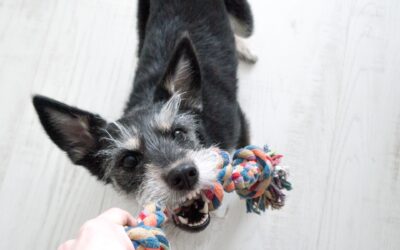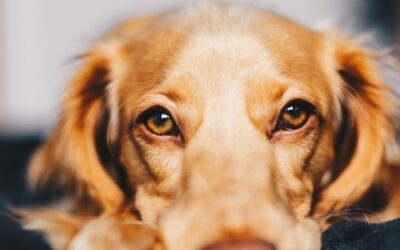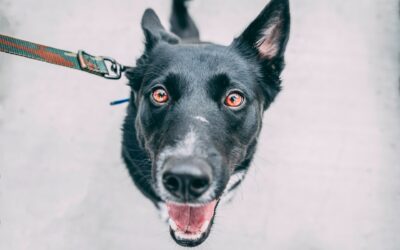We understand it can sometimes be a frustrating process when you are trying to rehome a rescue dog and find that your application for a specific dog is not successful. We want to explain why we put rehoming criteria in place following our assessments of the dogs. Each...
Dogs: Behaviour & Training Advice
Keeping children safe around dogs
Dogs and children communicate very differently, but they can be great friends and help children develop kindness and a sense of responsibility. Just remember our six golden rules for keeping your children safe and your dogs happy. 1. Stay with your children around...
Understanding dog behaviour
Understanding dog behaviour As a dog owner, it's always a good idea to keep an eye on your dog's behaviour and be on the lookout for any changes, as these can be a sign that something's wrong. Use this guide to help you recognise important body language signals and...
Caring for your pet while you are on holiday
Leaving your pets in safe hands Planning for a holiday can be an exciting time but don’t forget to include arrangements for your pets. Whether you plan to take them with you or not, it can take time to sort out their care so it’s best to start getting things ready...
Mental health, pets and people
It has been shown in scientific studies that pets can improve our mental health. An RSPCA poll by YouGov last year found that 45% of pet owners said their pets had helped their mental health during lockdown and studies have found a range of benefits that pets bring...
Dog Spaying and Neutering guidelines
The RSPCA's dog neutering guidelines on the latest studies on the effects of neutering and spaying on health and behaviour. Six months in bitches who are likely to be over 20kg when full grownFour months in bitches under 20kg when full grownSeven months in male...
Getting your dog to walk nicely on the lead
WALKING NICELY ON THE LEAD Make sure that before you start you have plenty of treats to hand. They only need to be tiny little pieces to give your dog a taste. We will need to do many repetitions at first when teaching this exercise, so having small pieces will...
How to socialise your dog
DOG INTRODUCTIONS/SOCIALISATION Many owners worry about allowing their furry friends to meet other dogs, for fear of something going wrong. On the other hand, many owners go a bit over the top and encourage their dog to meet every dog they see, in a bid to “socialise”...
Choosing the right rescue dog for you
BRINGING HOME A RESCUE DOG Adopting a rescue dog is one of the most rewarding things you can do. However it is important that you get the right dog for your family and your lifestyle and manage your expectations of your new furry friend. Dogs end up needing to be...
Handling your dog and introducing equipment
HANDLING AND EQUIPMENT It is important to introduce handling and new pieces of equipment to our dogs in a positive way. Handling issues can develop in dogs when their choice is repeatedly taken away. For example, being held still to have medication administered, or...

HELP & ADVICE ON CARING FOR YOUR DOG
Why we set rehoming criteria for individual dogs
We understand it can sometimes be a frustrating process when you are trying to rehome a rescue dog and find that your application for a specific dog is not successful. We want to explain why we put rehoming criteria in place following our assessments of the dogs. Each...
Keeping children safe around dogs
Dogs and children communicate very differently, but they can be great friends and help children develop kindness and a sense of responsibility. Just remember our six golden rules for keeping your children safe and your dogs happy. 1. Stay with your children around...
Understanding dog behaviour
Understanding dog behaviour As a dog owner, it's always a good idea to keep an eye on your dog's behaviour and be on the lookout for any changes, as these can be a sign that something's wrong. Use this guide to help you recognise important body language signals and...
Caring for your pet while you are on holiday
Leaving your pets in safe hands Planning for a holiday can be an exciting time but don’t forget to include arrangements for your pets. Whether you plan to take them with you or not, it can take time to sort out their care so it’s best to start getting things ready...
Mental health, pets and people
It has been shown in scientific studies that pets can improve our mental health. An RSPCA poll by YouGov last year found that 45% of pet owners said their pets had helped their mental health during lockdown and studies have found a range of benefits that pets bring...
Dog Spaying and Neutering guidelines
The RSPCA's dog neutering guidelines on the latest studies on the effects of neutering and spaying on health and behaviour. Six months in bitches who are likely to be over 20kg when full grownFour months in bitches under 20kg when full grownSeven months in male...
Getting your dog to walk nicely on the lead
WALKING NICELY ON THE LEAD Make sure that before you start you have plenty of treats to hand. They only need to be tiny little pieces to give your dog a taste. We will need to do many repetitions at first when teaching this exercise, so having small pieces will...
How to socialise your dog
DOG INTRODUCTIONS/SOCIALISATION Many owners worry about allowing their furry friends to meet other dogs, for fear of something going wrong. On the other hand, many owners go a bit over the top and encourage their dog to meet every dog they see, in a bid to “socialise”...
Choosing the right rescue dog for you
BRINGING HOME A RESCUE DOG Adopting a rescue dog is one of the most rewarding things you can do. However it is important that you get the right dog for your family and your lifestyle and manage your expectations of your new furry friend. Dogs end up needing to be...
Handling your dog and introducing equipment
HANDLING AND EQUIPMENT It is important to introduce handling and new pieces of equipment to our dogs in a positive way. Handling issues can develop in dogs when their choice is repeatedly taken away. For example, being held still to have medication administered, or...
Teaching your dog recall
RECALLRecall teaches our dogs to come back to us when they are called. It is a very important, if not the MOST important exercise we can teach our dogs. Teaching our dogs to come back when called is not easy, as you are competing against the sights and smells of the...
Teaching your dog to ‘Leave It!’ and ‘Drop!’
“LEAVE IT” AND “DROP”It is Important that we are very clear with our dogs when it comes to cues. If you use a cue for one behaviour it is important not to use that same cue for a different behaviour, as this can confuse our dogs as to what we actually want from them....
Teaching your dog ‘Hand Target’
HAND TARGETHand target, also known as “Touch”. This is a great tool to have in your dog training tool box. If trained effectively it can be used for many things, such as to get your dog's attention back onto you, instead of fixating on something scary, and as a fun...
‘This Way’: How to teach your dog to ignore something
THIS WAYDogs have a great sense of smell and like to stick their noses into most things including a good smell, a passing dog or human, or something more unpleasant. Teaching them a simple cue word to get them to leave what they have found and follow us is really...
What to do if your dog develops separation anxiety
Separation anxiety exhibits itself in many forms, including crying, barking, destruction of items in the home, soiling inside and even self mutilation, when the dog is left alone. One way to help separation anxiety is to change the dog's association with your “leaving...
How to treat your dog for existing resource guarding
Resource guarding is a behaviour that involves a dog actively guarding an object, place or person. It is most common where a dog considers a resource to be of high value, such as their food bowl, chews, toys, their bed, or even particular members of their family....
How to prevent your dog from developing resource guarding
There can be many reasons why a dog will guard and many different things that they can guard, including food, toys, people and rooms etc. Dogs can resource guard against people and other dogs and animals. It can often start with guarding against other animals in the...
How to tame prey chase drive in your dog
PREY DRIVE TRAINING STEP 1: Ditch the bowl Animate the food and look at what most animates your dog. This exercise Aims to build up those good experiences with you, making you more valuable and food more valuable and so it overpowers the environment. If dry fed, use...
How to house train your dog
HOUSE TRAININGAll dogs can be taught to toilet outdoors, and you might think it would come naturally, but this is not something they will all do automatically! Dogs need us to show them that this is the right thing to do, and to encourage them into forming good habits...
Controlling chewing and mouthing in dogs
CHEWING AND MOUTHINGPuppies use their mouths to explore the world around them, and to play. They might especially chew or mouth when they’re teething, as they lose their baby teeth and gain their adult teeth by around 7 months of age. It’s all perfectly normal...
Understanding why your dog barks
BARKINGBarking is a completely normal part of canine communication. However, different breeds and individuals might bark more than others. It may not always feel like it to us humans, because we might just not understand why our dog is barking, but every dog barks for...
Enriching your dogs life
We all love spending time with our dogs, but how can we make sure it is time well spent that enhances their quality of life and encourages them to reach their full potential? Enrichment! That’s how! We also want to make sure we are giving our dogs opportunities to...
Teaching your dog appropriate play
Appropriate play is an exercise that has a couple of really useful applications. It teaches our dogs to have fun, but that there are rules and It is also a great exercise to help combat chewing and mouthing behaviour, such as your dog chewing on you or your clothing...
Training your dog to SIT
Sit can be a useful behaviour to teach your dog and it can be a valuable exercise for dog guardians to attempt. Sit can be used in some instances, to replace an unwanted behaviour, such as jumping up when greeting new people. It can also be used as a starting point...
Training with Treats & Markers
Training with treats Treats are a great way to teach our dog new behaviours, as you can get many repetitions in quickly and most dogs will work for food. Try not to think of treats as bribery and instead as payment for a job well done. The treats don’t need to be...
Settling in a Rescue Dog
SETTLING IN YOUR RESCUE DOG Deciding to rescue a dog can be a very exciting and rewarding experience, but it is important that you prepare yourself for an animal who likely has past trauma and so may take a while to settle with you. Past trauma can also come with...










